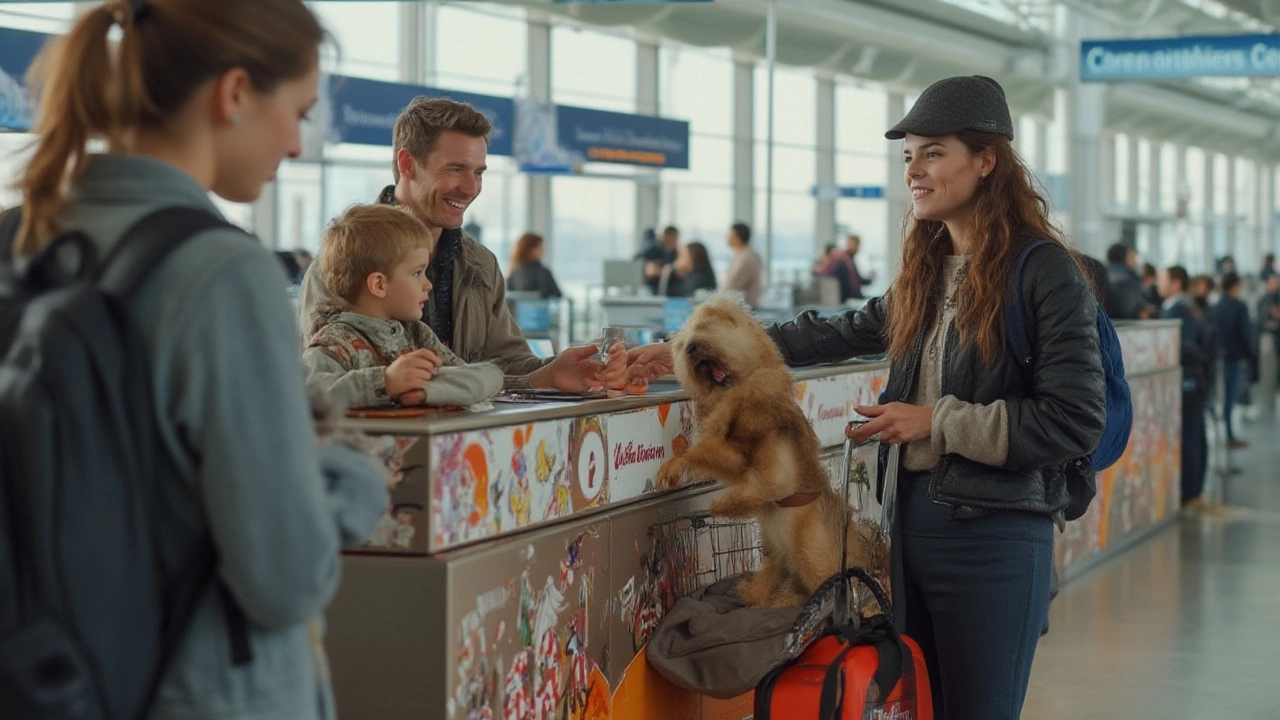Flying with a Large Dog: What You Need to Know
Taking a big dog on a plane can feel like a mission, but it doesn’t have to be. With a bit of planning you can avoid surprises and make the trip smooth for you and your pup. Below are the steps that work for most owners, from checking airline rules to calming your dog at the gate.
Before the Flight: Planning and Preparation
First, pick an airline that accepts large dogs in the cabin or as cargo. Look for the exact weight limit – many carriers cap at 45 lb, but some allow up to 70 lb if the crate fits under the seat. Call the airline to confirm the fee and any paperwork they need.
Next, get a crate that meets the airline’s dimensions. The crate should be sturdy, well‑ventilated, and large enough for your dog to stand, turn, and lie down comfortably. A crate that’s too tight can stress a big dog and may be rejected at the desk.
Schedule a vet check a week before you travel. The vet can certify that your dog is fit to fly and update any vaccines. Ask about an airline‑approved health certificate – most carriers require one issued within 10 days of departure.
Consider pet travel insurance. Some policies cover flight delays, injuries, or emergency care abroad. It’s a small cost compared to a vet bill if something goes wrong mid‑journey.
Day of Travel: Airport and In‑Flight Tips
Arrive early – at least two hours before a domestic flight and three for international. This gives you time to check in, get your dog’s crate on the belt, and handle any last‑minute paperwork.
Before you head to security, let the TSA officer know you have a pet. Keep the crate closed but easily accessible. You’ll need to take the dog out of the crate for the X‑ray, so have a leash ready and keep your dog on a short lead.
Give your dog a light meal a few hours before the flight and plenty of water. A full belly can cause nausea, while dehydration can make your dog anxious. Put a familiar blanket or a piece of your clothing in the crate – the scent helps calm them.
During the flight, check the temperature in the cargo hold if your dog is traveling as checked baggage. Most airlines keep it climate‑controlled, but it’s worth confirming. Talk to the crew if you notice any signs of distress – they can often adjust the airflow or give you a quick update.
When you land, head straight to the designated pet release area. Give your dog a bathroom break and a drink before you head to your accommodation. A short walk helps burn off any lingering stress.
Following these steps turns a potentially tricky experience into a routine trip. Your large dog will be calmer, the airline staff will appreciate your preparation, and you’ll both arrive ready for the adventure that follows.
- Morgan Ainsworth
- 0 Comments
Can My 50 Pound Dog Fly In Cabin With Me? Rules, Tips & Airline Policies Explained
Hoping your 50-pound dog can fly in the cabin with you? Learn airline rules, alternatives for big dogs, and tips for less stressful pet travels.
View More
